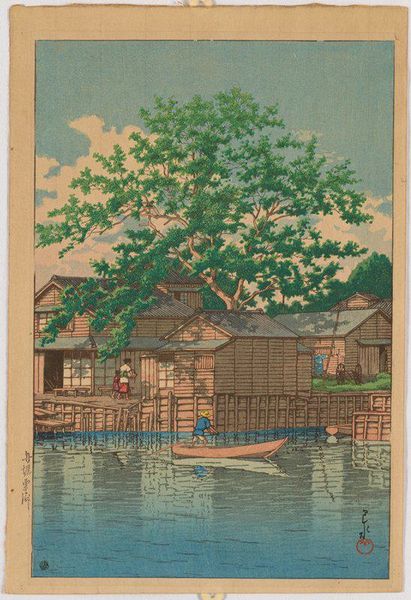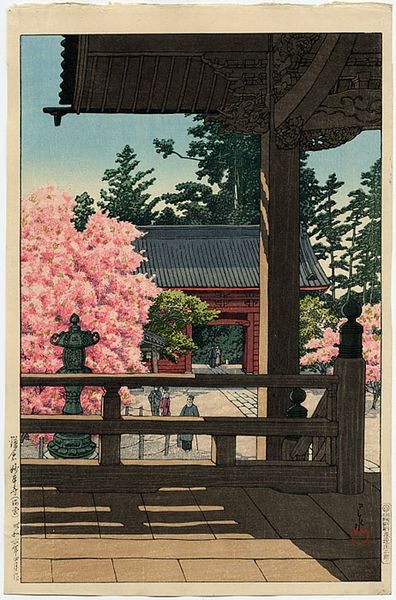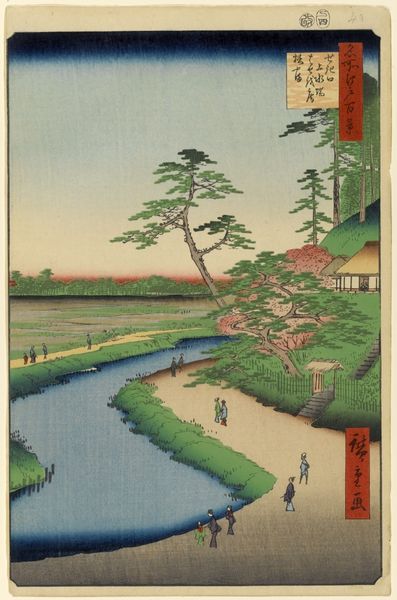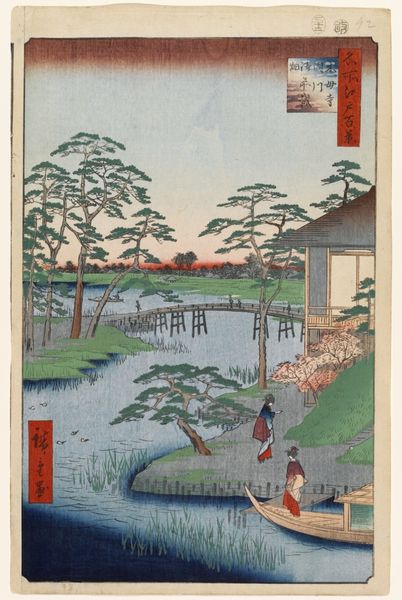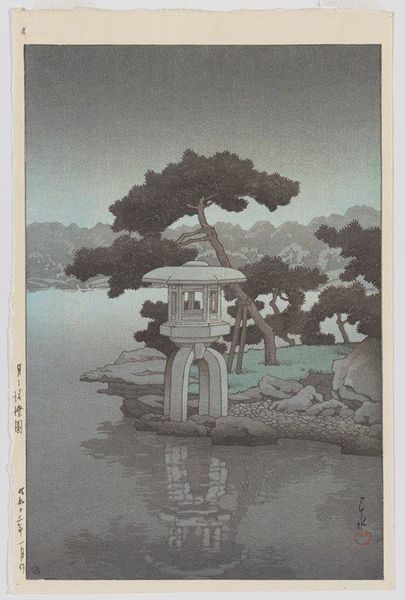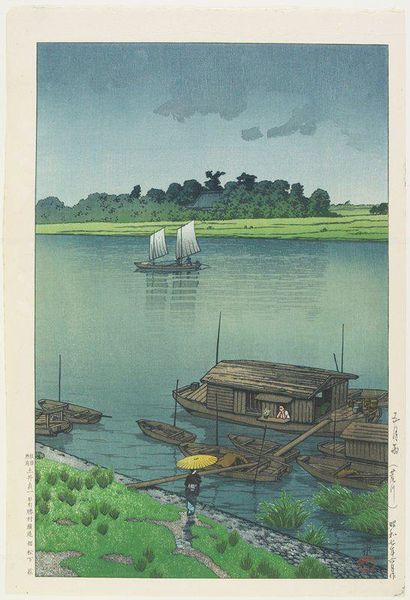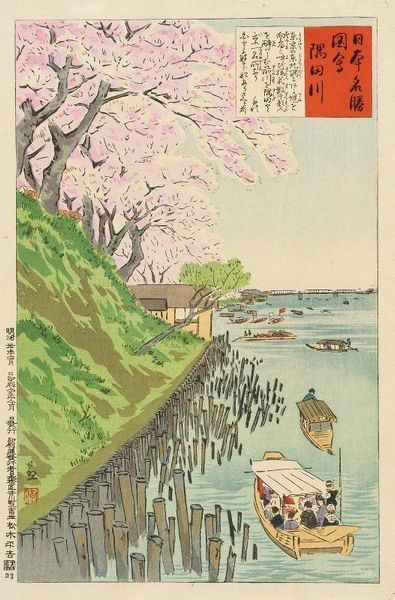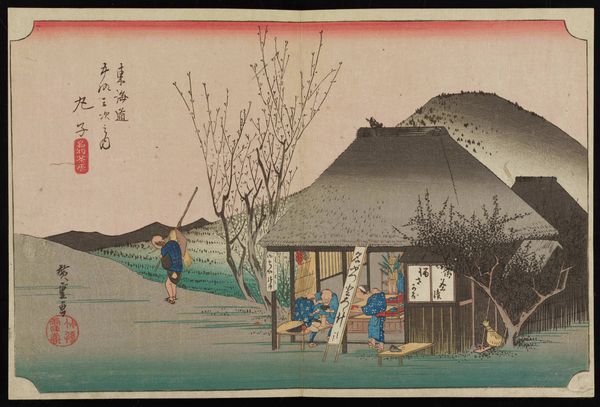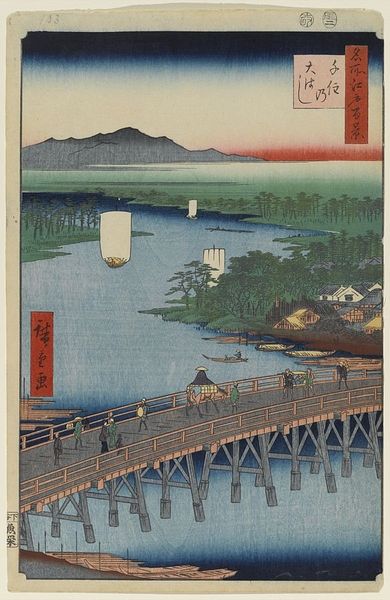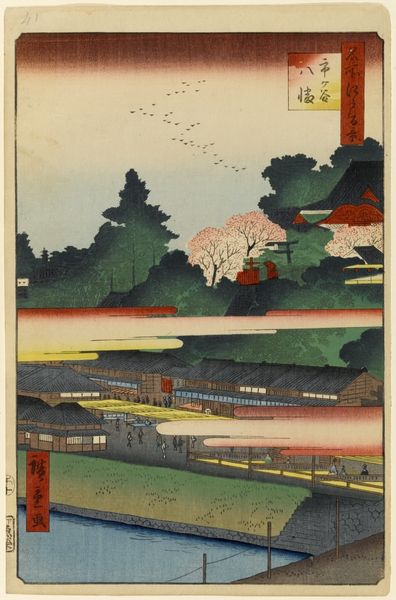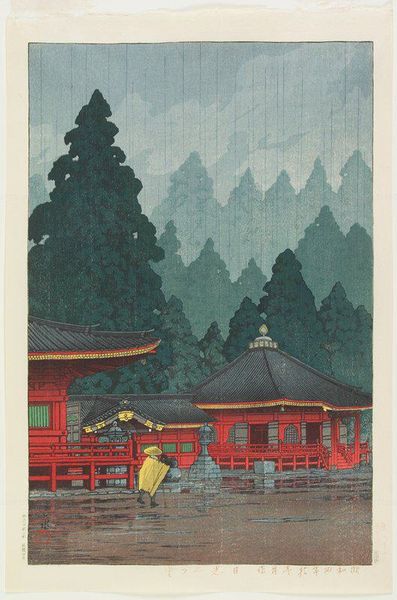
Dimensions: 14 × 10 in. (35.56 × 25.4 cm) (image)23 × 19 × 1 1/2 in. (58.42 × 48.26 × 3.81 cm) (outer frame)
Copyright: No Copyright - United States
Curator: Let’s discuss Hasui Kawase's "Kawanishi in Tochigi Prefecture," a woodblock print created in 1947, part of the collection at the Minneapolis Institute of Art. It depicts a serene, traditional Japanese scene. What's your initial reaction to it? Editor: Immediately, I'm drawn to the water wheel. The materiality and craft involved in its construction contrast sharply with the flowing, almost dreamlike, water it’s meant to harness. It gives a sense of purpose grounded in physical work, almost contradicting the placid atmosphere of the print. Curator: That’s insightful. Considering the post-war period in which it was made, the image’s tranquil depiction of a seemingly untouched landscape can be seen as a nostalgic embrace of traditional values. The Ukiyo-e style harkens back to a pre-industrialized era. In my reading, this image actively resists the narrative of devastation and urban experience by foregrounding idyllic rural scenes. Editor: Precisely. The woodblock printing technique itself—the labor involved in carving each block and layering colors—emphasizes a deliberate, slow process. There's a palpable sense of labor tied to the landscape in that construction. Look at the textured layering of the rooftop tiles or the stone embankment and pathway – those forms would necessitate considerable artistry to reproduce faithfully. Curator: The lone figure doing laundry at the river, in my view, represents a figure embedded in their everyday existence. In these scenes, Kawase often captures everyday rituals, representing the quotidian life often ignored in favor of grand historical narratives. It invites us to ponder labor within these serene spaces, doesn't it? Editor: Absolutely. By looking at these prints, it's easy to recognize how the materiality reflects the artist's intentional choice to show labor not just as physical work but also as an interwoven relationship with a very particular location and set of cultural and economic conditions. It brings together elements of function, identity, and historical place. Curator: Ultimately, this artwork resonates for its capacity to present a space for reflection. Kawase asks us to consider both the enduring power of nature and the gentle ways in which we mark the landscape and imprint ourselves upon it. Editor: For me, it underlines how the value ascribed to craftsmanship is interwoven with societal notions of production and worth. It leaves you wondering about the narratives embedded in the tools, in this case, woodblocks, the printing, and the landscapes themselves.
Comments
No comments
Be the first to comment and join the conversation on the ultimate creative platform.
